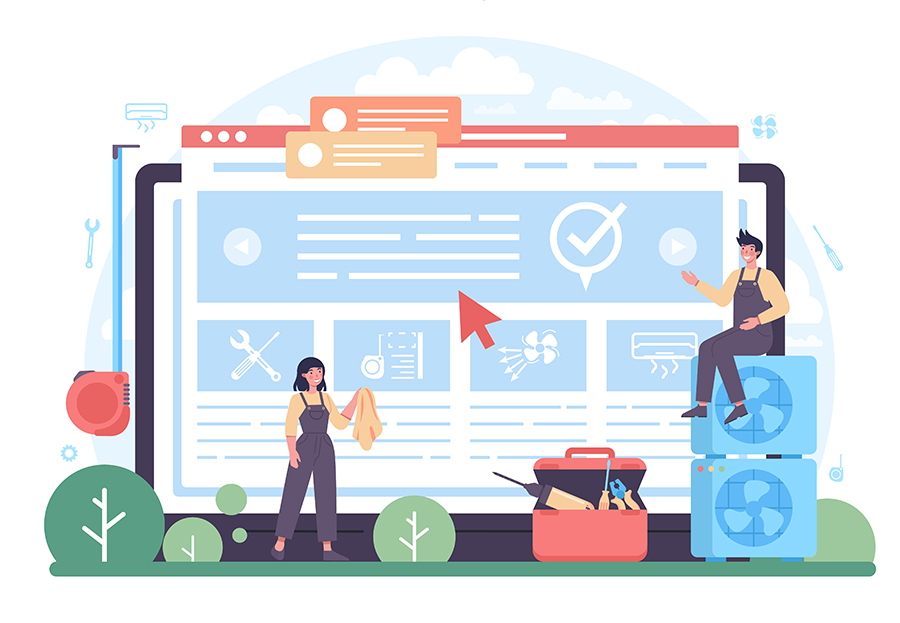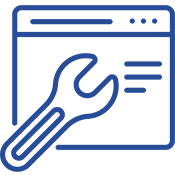Creating a website that users find intuitive, accessible, and enjoyable is essential for any brand or business aiming to succeed in the digital world. A user-friendly website does more than just look good—it functions well, provides value, and guides visitors smoothly to their goals. Below are top tips to help you design a truly user-centric online experience.
1. Simplify Navigation
One of the most fundamental elements of a user-friendly website is simple and intuitive navigation. When visitors land on your site, they should easily understand how to get around. Implement clear, well-labeled menu items and structure your site hierarchy logically. Avoid overwhelming users with too many choices—stick to essential pages like Home, About, Services, Blog, and Contact. Consider adding a sticky navigation bar that follows the user as they scroll. Also, make sure your navigation is consistent across all pages, and don’t forget to add a site search feature for quick access to specific content.
2. Focus on Responsive Design
With mobile devices accounting for over half of web traffic worldwide, responsive design is no longer optional. Your website must adapt seamlessly to various screen sizes and devices. Use a mobile-first approach when designing, ensuring touch-friendly buttons, flexible images, and collapsible menus. Responsive websites enhance user satisfaction by eliminating the need for zooming, panning, or side-scrolling. This improves usability and helps with SEO rankings, as search engines prioritize mobile-friendly sites. Tools like media queries and CSS frameworks such as Bootstrap or Tailwind CSS can help achieve this efficiently.
3. Optimize Website Speed
Users expect fast-loading websites, and even a one-second delay can lead to increased bounce rates and lower conversions. To enhance loading times, compress images, reduce HTTP requests, use lazy loading for media, and minimize CSS, JavaScript, and HTML. Employ tools like Google PageSpeed Insights or GTmetrix to analyze your site’s performance and get actionable recommendations. Hosting also plays a key role—choose a reliable provider that offers good uptime and fast server response. Additionally, use caching plugins or CDNs (Content Delivery Networks) to distribute your content faster to global users.
4. Maintain Visual Consistency
Consistency in design fosters familiarity and trust. Use a consistent color scheme, font family, and design elements across all pages. This creates a cohesive look and improves brand recognition. Avoid using too many fonts or clashing colors, which can be visually overwhelming. Stick to a limited palette and apply style guides for headers, buttons, and icons. When elements behave predictably—like buttons that change color on hover—users gain confidence in navigating your site. A well-thought-out style guide ensures that every piece of content and interface element feels part of a unified experience.
5. Write Clear and Engaging Content
The content on your website should be easy to understand, relevant, and engaging. Use plain language, short sentences, and an active voice. Avoid jargon unless your audience is familiar with it, and structure content with headings, bullet points, and white space for better readability. Tell users what they need to know rather than what you want to say. Provide helpful, concise information that solves their problems. Content should also be scannable—most users skim web pages rather than reading word-for-word. Break up text with visuals and focus on value-driven messages.
6. Implement Strong Calls to Action (CTAs)
CTAs guide users toward desired outcomes, whether it's signing up for a newsletter, contacting you, or purchasing a product. Use clear, action-oriented language like “Get Started,” “Download Now,” or “Book a Demo.” Make CTAs visually distinct by using contrasting colors and placing them strategically throughout your site—above the fold, at the end of blog posts, and within product descriptions. Avoid vague phrases like “Click Here,” and instead, be specific about what the user will gain by clicking. A/B testing different CTA styles can help determine what resonates most with your audience.
7. Make Accessibility a Priority
Accessibility ensures that everyone, including people with disabilities, can navigate and interact with your site. This involves using alt text for images, sufficient color contrast, keyboard-friendly navigation, and screen reader compatibility. Follow the Web Content Accessibility Guidelines (WCAG) to cover all essential aspects. Accessibility isn’t just ethical—it can broaden your reach, enhance usability for all users, and improve SEO. Tools like WAVE and Axe can help you identify and fix accessibility issues on your site. Implementing ARIA roles, semantic HTML, and proper form labeling further strengthens accessibility.
8. Use Visual Hierarchy to Guide Attention
Visual hierarchy helps users process information more effectively by prioritizing elements based on their importance. Use size, color, contrast, and positioning to draw attention to the most critical components, such as headlines, buttons, or forms. Larger, bolder text typically grabs more attention, so use it for primary headings or key messages. Ensure CTAs stand out and that supporting elements like subheadings and captions guide users naturally through your content. By organizing content in a way that aligns with how people scan pages, you enhance comprehension and reduce cognitive load.
9. Include Trust Signals
Trust is crucial in converting visitors into customers. Display recognizable trust badges, SSL certificates, and client testimonials to reassure users that your site is secure and credible. If applicable, highlight media mentions, client logos, or partnerships to boost your reputation. Include a clear privacy policy, return policy, and terms of service to foster transparency. Visible contact information—like an address, email, and phone number—adds legitimacy. For e-commerce sites, product reviews, star ratings, and social proof go a long way in building consumer trust.
10. Provide Helpful Error Messages
No website is perfect, and users will occasionally encounter errors. Well-designed error messages help them recover quickly without frustration. Whether it’s a 404 error page or a form input issue, provide a message that’s clear, polite, and helpful. For instance, a 404 page could include links to the homepage or popular content. If a form field is incorrect, specify what went wrong and how to fix it. Avoid using technical jargon or blame-shifting—always make the error about the issue, not the user. A good error message maintains the flow of the user journey.
11. Enhance Forms for Better Usability
Forms are essential touchpoints, especially for lead generation and user interaction. Keep forms short and ask only for necessary information. Use placeholder text and field labels to guide users, and organize inputs logically. Real-time validation helps users correct mistakes immediately, and progress indicators are useful for longer multi-step forms. Group related fields together and ensure form submission buttons are easy to locate. Provide a success message or confirmation email after submission to assure users that their action was successful.
12. Utilize User Feedback and Analytics
Listening to your users is one of the best ways to improve usability. Use surveys, feedback forms, and session recordings to understand what users like and where they struggle. Google Analytics can reveal user behavior patterns, such as bounce rates, exit pages, and time spent on specific sections. Heatmaps from tools like Hotjar show where users click or hover, helping identify content that works and areas needing improvement. Regularly analyze this data and iterate based on real user feedback to keep your website aligned with user expectations.
13. Minimize Pop-Ups and Distractions
While pop-ups can be effective for lead generation, too many of them can disrupt the user experience. Use them sparingly and time them wisely—for example, after a user spends some time on a page or shows exit intent. Avoid full-screen pop-ups that block navigation and frustrate visitors. Instead, opt for subtle slide-ins or banners. Make sure users can easily close pop-ups and that they don’t interfere with mobile usability. The same goes for autoplay videos or flashy animations—use them tastefully and ensure they don’t overwhelm or distract from core content.
14. Keep Content Fresh and Relevant
An outdated website not only looks unprofessional but also hurts your credibility. Regularly update content to ensure accuracy and relevance. This includes updating blog posts, service information, product descriptions, and contact details. Fresh content also signals to search engines that your site is active, improving your rankings. Create a content calendar to plan updates and new posts consistently. Additionally, audit old content and optimize it with updated keywords, visuals, or internal links to improve its performance and maintain a positive user experience.
15. Test, Iterate, and Evolve
No website is ever truly finished. Technology, user expectations, and market trends evolve continuously, so your website must keep up. Conduct A/B testing to compare different designs or messaging strategies and identify what resonates best with your users. Regularly test your site’s functionality, browser compatibility, and mobile responsiveness. Create a feedback loop where data, testing, and user input inform continual improvements. Staying proactive ensures that your website remains user-friendly, competitive, and aligned with both your goals and your audience’s needs.
Conclusion
Creating a user-friendly website isn’t just about making things look pretty—it’s about crafting a digital environment that’s intuitive, inclusive, and goal-oriented. From simplifying navigation and optimizing performance to ensuring accessibility and gathering feedback, every element contributes to the overall user experience. By implementing these top tips, you not only enhance satisfaction and engagement but also build trust and loyalty that convert visitors into long-term supporters of your brand. At Innobuds, we believe that when you put users first, success always follows—and we’re here to help you build websites that truly work for your audience.






 Web Designing
Web Designing Web Development
Web Development Web Hosting
Web Hosting Domain names
Domain names Search Engine Optimization
Search Engine Optimization Website Maintenance
Website Maintenance Graphic Designing
Graphic Designing Digital Marketing
Digital Marketing Branding
Branding Professional Eamil
Professional Eamil

